SpaceCrafts: Build your own JWST costume!
- By Sara Mitchell
- October 25, 2013
- 2 Comments
For the past couple of years, we’ve run a Halloween costume contest – and we’ve seen some pretty amazing costumes! We also occasionally get a peek at costumes (in-progress and finished) on Twitter or Facebook… and when the Schoellner family tweeted a shot of their JWST costume, we knew we needed to share! They’ve kindly put together a tutorial for us about how they built it.
Without further ado… take it away, Dirk!
With rockets, space exploration, and alien planets, it’s natural that NASA inspires kids of all ages. Combine that excitement and creativity with Halloween and the possibilities are endless. We start early each year – by September, the kids have ideas of what they would like to be for Halloween, usually inspired by the latest NASA probes to make the news. This year’s costume by our seven year-old was inspired by a visit to NASA Goddard Space Flight Center’s visitor center where he saw an example of the James Webb Space Telescope’s (JWST) hexagonal mirrors.
In general, we’ve found that designing NASA-based costumes out of common household materials adds to the kids’ creativity (and ours), and the JWST costume was no exception. We built the primary mirror array using a trash can lid, as it gave us a nice concave surface to work with.
After cutting in a few necessary features, like a hole for the trick-or-treater’s head, we spray-painted the convex side black and the concave side gold. We chose to paint the lid because our concave trashcan surface prevented us from gluing in smooth gold paper cutouts, and sputter-coating a trash can seemed excessive.
To create the 18 mirror segments, we drew hexagons of different sizes until we found a size that tiled nicely across the lid. The kids made and scaled the hexagons using paper and a compass – changing the compass diameter changes the hexagon size.
Once we had appropriately sized-hexagons, we taped them into the concave side of the lid to get the gaps between the mirror segments located correctly, and marked the vertices. This turned out to be more difficult than anticipated, as mapping the 2D hexagons onto the 3D curved surface became complicated around the outer edges of the lid. We then cut thin strips of black duct tape and the kids played a complex game of connect-the-dots with the hexagon vertices to outline the mirror segments. We had initially attempted to create the mirror segment lines using black paint, but found the process excessively complex, and the duct tape segments proved much easier, and gave a nice 3-dimensional visual effect. We found it easier to cut the very thin lines we needed from flat tape sheets rather than a traditional roll of tape.
To anchor the mirror on our trick-or-treater and create the tertiary mirror at the center of the primary mirror, we re-purposed a tight fitting hat from a previous costume, poked two small holes in both the hat and the lid and secured them together using pipe-cleaners. The secondary mirror assembly and supports were built using thin plastic tubing, which we cut to an appropriate scale length and used 5-minute epoxy to anchor to the trash can lid. At the mating vertex of the three tubes, we placed a small plastic cap we had rescued from our recycling bin, and filled it with the remaining epoxy to secure the tubes.
Adding light to Halloween costumes adds uniqueness (and distracts from faults), while also helping with safety – a glowing costume makes it easier for cars and concerned parents to keep track of trick-or-treaters in the dark. Electroluminescent (EL) wire is a copper wire with a phosphor coating that glows when an AC signal is applied to it. It is readily available from online stores in a variety of colors and can be cut to length and taped or glued to costumes easily. A 9-volt battery will easily power one costume through a night of trick-or-treating.
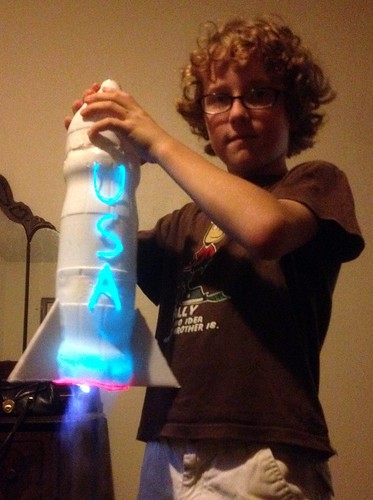
Another cool experiment with EL wire
Credit: Dirk Schoellner
We used yellow EL wire, and wired three 2 foot lengths in parallel. One length was fed into each of the plastic tubes that created the arms of the secondary mirror. We anchored the converter and battery on the back of the lid, covering the excess wiring with traditional black electrical tape.
We created the heat shield platform out of gray foam board, cutting it to an appropriate size and securing to an old sports uniform (turned inside out to hide the logo) with duct tape and two thin lines of fishing line threaded back into the shoulders of the shirt for support.
Finally, what really makes costumes identifiable (and obscures all sorts of minor errors) is the liberal application of NASA logos, all harvested from NASA’s websites. Spray adhesive is the best way to smoothly attach larger printed logos, such as the JWST logo we used to cover the back of the telescope.
And… voila!
We’ve found many NASA employees are incredibly accessable on Twitter for suggestions and advice for appropriate designs and decorations. (Last year, @marsroverdriver’s suggestions were indispensable in our design of a Mars Curiosity costume.)
Over the past few years, we’ve found that common household supplies, along with the liberal use of duct tape, EL wire, and NASA logos, can create any NASA invention your kids can imagine!
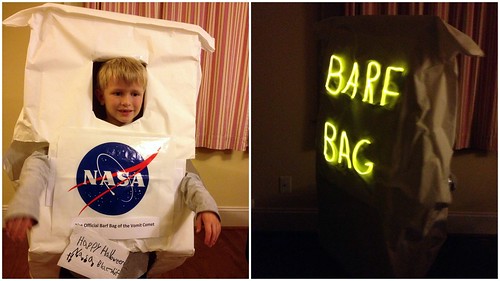
Brian Schoellner’s 2012 costume
Credit: Dirk Schoellner
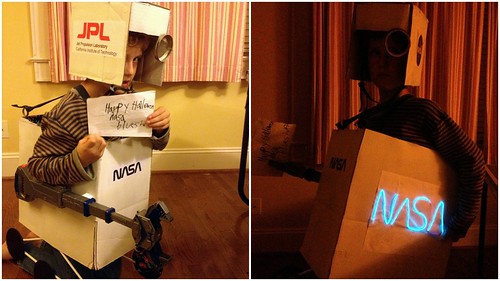
Eric Schoellner’s 2012 costume
Credit: Dirk Schoellner
Have you created your own space-themed costume? Share them with us… and perhaps we’ll feature your space craftiness in a future blog post!


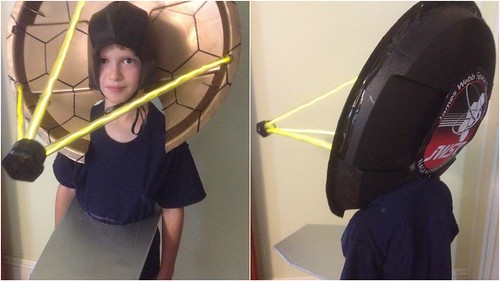
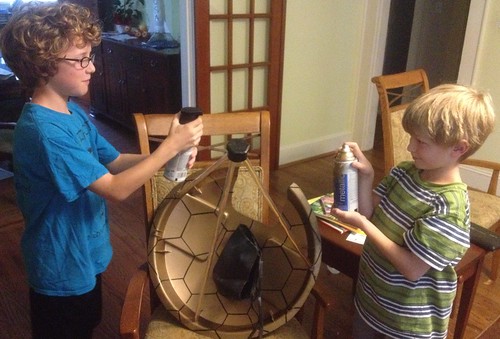
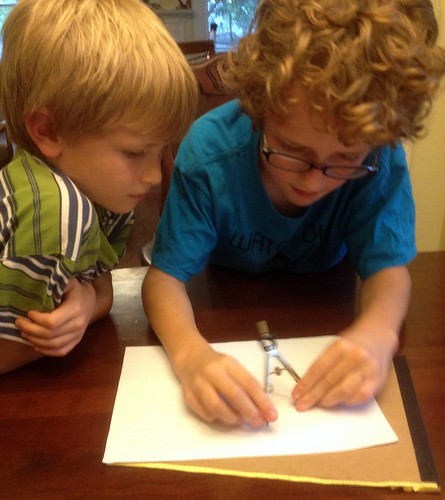
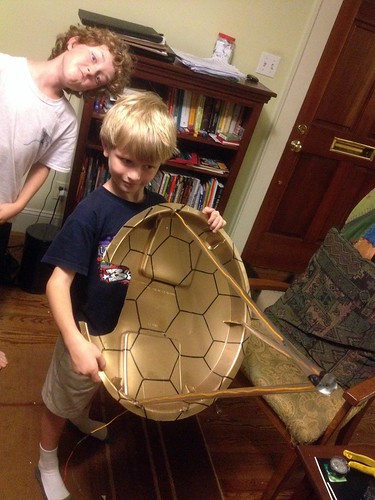
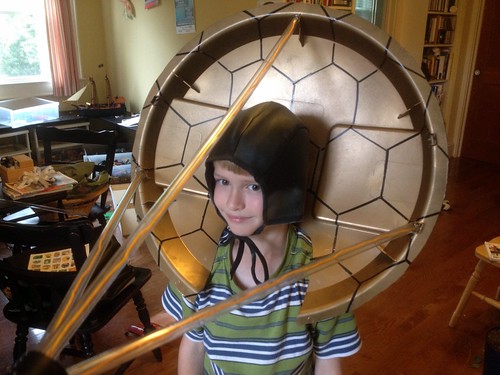


This is just fantastic! Well done!
Great post!